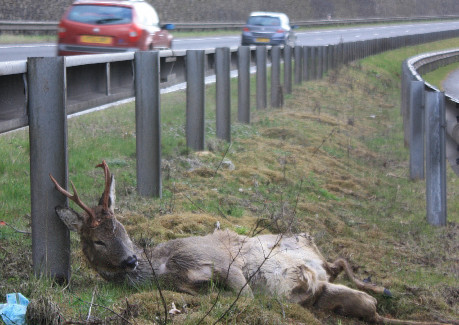Thursday 11th May 2017, 11:46am
Motorists are being advised to slow down and be on the lookout for deer on the road, especially in May when young deer disperse to look for their own territories.
Collisions between vehicles and deer have increased by 10% in Scotland since previous figures were collated.
A new report reveals that from January 2013 to December 2015, over 4,600 collisions between vehicles and deer on Scottish roads were reported, although estimates are that the true figure could be as high as 9,000 per year, resulting in 50 to 100 human injuries.
The highest number of collisions occurs in early evening through to midnight, with a slightly lower peak from 6 am to 9 am. The time of year when the highest number of incidents takes place is May and June, with high rates in autumn as well.
Over the past 50 years, wild deer in Scotland have increased their range and numbers by almost 50%, while the volume of road traffic has almost doubled in the same period. This combination has led to higher deer-vehicle collision rates across the country, with the greatest increase occurring in Aberdeenshire, Fife and the Central Belt.
Jamie Hammond, SNH deer management officer, said: "This report confirms what we suspected: that accidents involving deer are becoming more common. Be aware that if you're driving near woods, deer can suddenly appear before you have time to brake. If you do hit a deer, report it to the police even if youíre uninjured and your car isnít damaged, as the deer may be fatally injured and suffering."
Driving tips to avoid deer include:

Dead roe deer at the roadside. Photo by Langbein Wildlife.